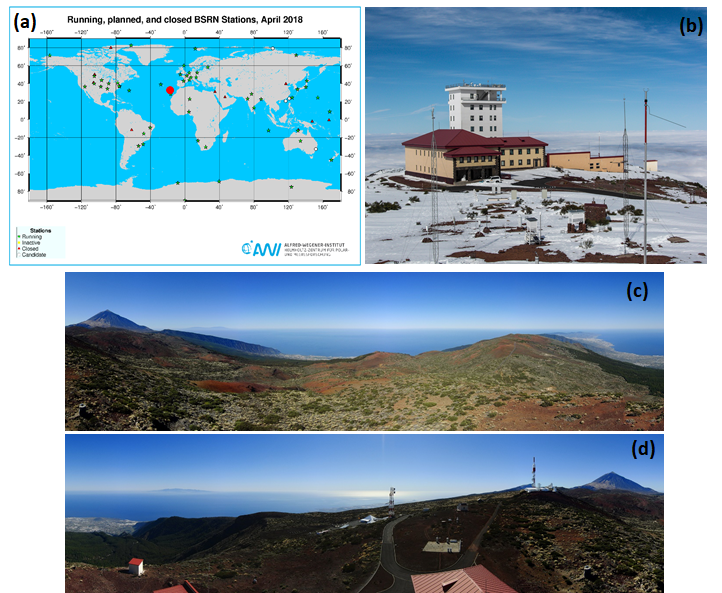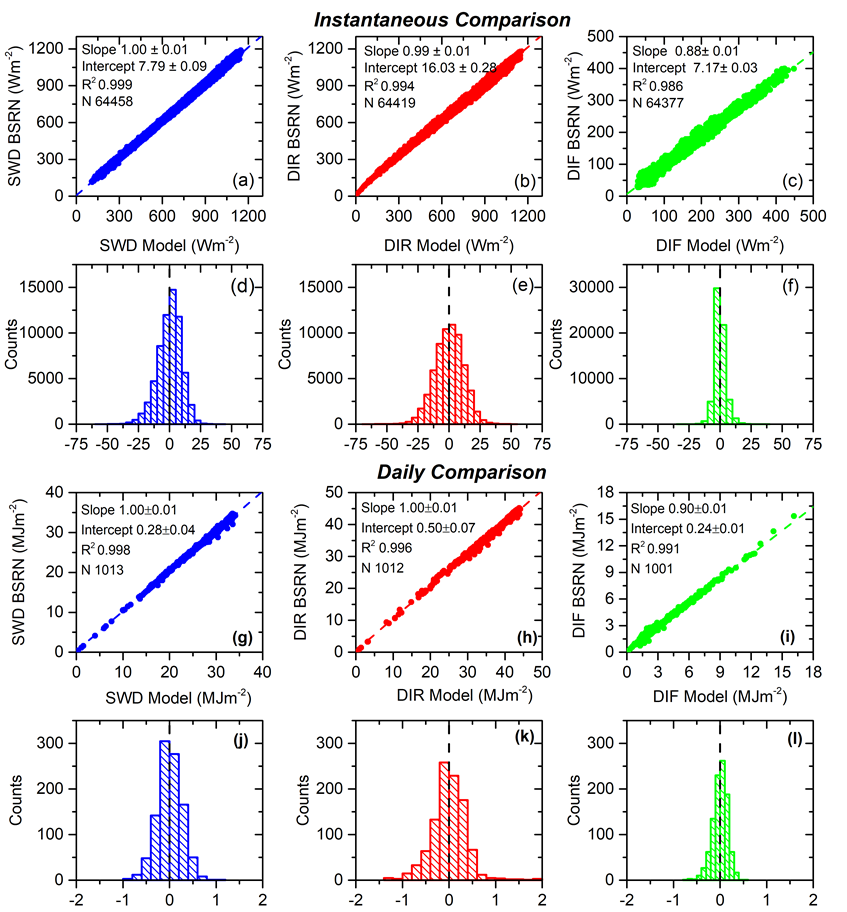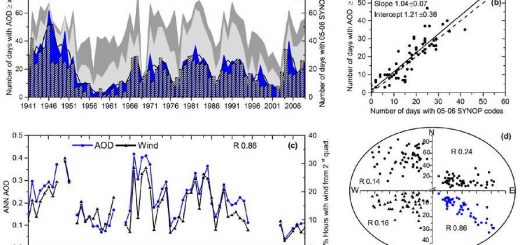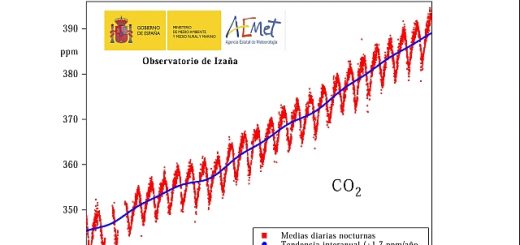“Description of the Baseline Surface Radiation Network (BSRN) station at the Izaña Observatory (2009-2017): measurements and quality control/assurance procedures.” paper published in Geoscientific Instrumentation, Methods and Data Systems
In this paper, we present a description of the Baseline Surface Radiation Network (BSRN) station at the Izaña Observatory. This station (Station: IZA, #61) is part of this network since 2009. This is a high-mountain station located in Tenerife (Canary Islands, Spain; at 28.3° N, 16.5 W, 2373 m a.s.l.) and is a representative site of the subtropical North Atlantic free troposphere (Figure 1).

Figure 1 .- (a) Location of the Izaña station (IZA) on a global map of all BSRN stations http://bsrn.awi.de). (b) Izaña Atmospheric Observatory. Views of Izaña radiation station: (c) Northern and Eastern Views (Azimuth 360°, Inclination 0° degrees; Azimuth 90°, Inclination 0° respectively) (d) Southern and Western Views (Azimuth 180°, Inclination 0° and Azimuth 270°, Inclination 0°, respectively).
IZA contributes with basic-BSRN radiation measurements, such as, global shortwave radiation (SWD), direct radiation (DIR), diffuse radiation (DIF) and longwave downward radiation (LWD) and extended-BSRN measurements, including ultraviolet ranges (UV-A and UV-B), shortwave upward radiation (SWU) and longwave upward radiation (LWU) and other ancillary measurements, such as vertical profiles of temperature, humidity and wind obtained from radiosonde (WMO, station #60018) and total column ozone from Brewer spectrophotometer. The IZA measurements present high quality standards since more than 98 % of the data are within the limits recommended by the BSRN. There is an excellent agreement in the comparison between SWD, DIR and DIF (instantaneous and daily) measurements with simulations obtained with the LibRadtran radiative transfer model. The root mean square error (RMSE) for SWD is 2.28 % for instantaneous values and 1.58 % for daily values, while the RMSE for DIR is 2.00 % for instantaneous values and 2.07 % for daily values (Figure 2). IZA is a unique station that provides very accurate solar radiation data in very contrasting scenarios: most of the time under pristine sky and background conditions, and periodically under the effects of the Saharan Air Layer characterized by a high content of mineral dust.

Figure 2.- Scatterplots and histograms of the instantaneous (Wm-2) and daily (MJm-2) radiation measurements and simulations for the period 2009–2017: (a, d, g, j) SWD, (b, e, h, k) DIR and (c, f, i, l) DIF. The fitting parameters are shown in the legend.
For more details about this work please refer to:
García, R. D., Cuevas, E., Ramos, R., Cachorro, V. E., Redondas, A., and Moreno-Ruiz, J. A.: Description of the Baseline Surface Radiation Network (BSRN) station at the Izaña Observatory (2009–2017): measurements and quality control/assurance procedures, Geosci. Instrum. Method. Data Syst., 8, 77-96, https://doi.org/10.5194/gi-8-77-2019, 2019.
The paper can be downloaded from: https://www.geosci-instrum-method-data-syst.net/8/77/2019/gi-8-77-2019.pdf







